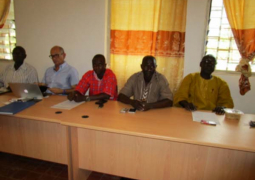The forum was held at the eyecare centre in Serrekunda General Hospital in Kanifing.
Abba Hydara, chief executive officer of Sheikh Zayed, said diabetes is a major public health concern threatening health systems.WHO predicts it to be the 7th leading cause of death in the year 2030.
According to statistics, more than 347 million people worldwide have diabetes and more than 4.2 million diabetes patients have visual impairment.
In 2004, about 3.4 million people die from diabetes mellitus.According to some researches, people of African descent are more frequently and severely affected than Caucasians.
Mr Hydara said the objectives of TADDS are to monitor existence, availability and accessibility of healthcare services for diabetic patients.
It also helps to have an accurate picture of existence and effectiveness of links between diabetes mellitus and diabetes retinopathy management.
Sarjo Kanyi, programme manager at the National Eye Health Programme, said TADDS is designed to collect information from the Ministry of Health, WHO country office, and local and international non-governmental organisations involved in the provision of diabetes and eyecare.
It will also collect information from the national prevention of blindness committee, professional organisations, and all other related stakeholders.
Mr Kanyi said The Gambia has been identified as one of the countries in Africa where information is required.
The African Vision Research Institution (AVRI) was commissioned by the WHO to collect information in countries on diabetes management using a health systems approach.
The tool will be used by AVRI to carry out a situation analysis, define service provision levels and identify the gaps to be addressed in ensuring universal access to diabetes care.
It will help inform policies and programmes on prevention and treatment of diabetes.


